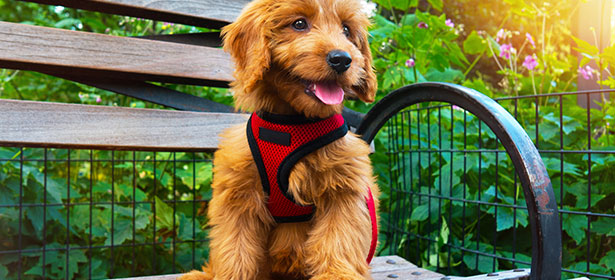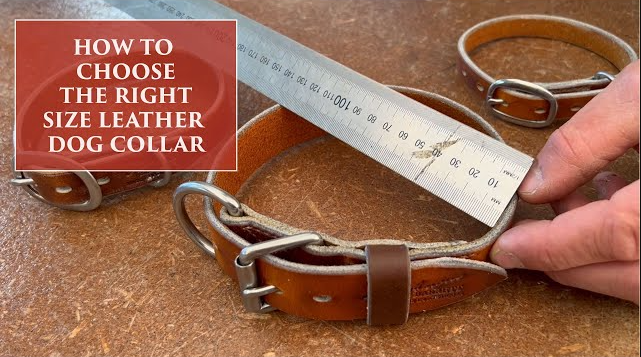Quality Dog Harnesses for Comfort and Control – Rocky Mountain Dog

Dog harnesses play a pivotal role in ensuring comfort, safety, and control while walking, training, or engaging in activities with our beloved pets. When it comes to finding the right Comfortable Dog Harnesses, Rocky Mountain Dog stands out for its commitment to quality, offering a diverse range of harnesses designed to cater to different needs.
Table of Contents
Why Invest in Quality Dog Harnesses
Quality dog harnesses go beyond mere restraints for your pet. They provide not only comfort but also various safety benefits, ensuring a secure and enjoyable experience for both the pet and the owner.
Comfort for Your Pet
A paramount aspect of investing in a high-quality dog harness is the comfort it provides to your furry friend. When you opt for a top-notch harness, you’re prioritizing your pet’s well-being. High-quality materials used in these harnesses reduce the likelihood of skin irritations, chafing, or discomfort. This is especially crucial as low-quality materials or an improper fit could lead to discomfort or even potential health issues for your pet.
Safety Anchorage
Beyond comfort, the safety benefits of superior harnesses are noteworthy. These harnesses act as a secure anchor point for leashes. Traditional collars might pose risks, especially for strong pullers, potentially leading to escape or injury due to the strain on their neck. High-quality harnesses distribute the pressure more evenly across the chest and shoulders, reducing the risk of escape or injury while ensuring your dog’s safety during walks or outings.
Types of Dog Harnesses

Adjustable Harnesses
Rocky Mountain Dog’s range includes adjustable harnesses designed for a customized fit, catering to various dog breeds and sizes. These harnesses are incredibly versatile, making them ideal for growing puppies or dogs with distinct body structures. The adaptability of these harnesses ensures a comfortable and secure fit, regardless of your pet’s size or breed. They provide the flexibility needed to accommodate the changing needs of your pet as they grow, ensuring they remain comfortable and safe during every stage of their development.
Vest Harnesses
Another offering from Rocky Mountain Dog includes snug-fitting vest harnesses that prioritize excellent support. These harnesses are crafted to fit snugly around your pet’s body, providing optimal support, especially for smaller dog breeds or dogs that tend to pull. The design ensures that these dogs feel secure and comfortable during their walks or any activity, reducing the strain on their bodies. The snug fit prevents excessive movement of the harness, making it suitable for dogs who tend to pull or move more during walks or other exercises.
Features to Look For
Durability
Selecting a dog harness with durability as a key feature is essential for its longevity and performance. High-quality harnesses are crafted from robust and sturdy materials, ensuring they withstand regular use and various outdoor activities. These materials are designed to endure wear and tear, maintaining the harness’s integrity even with extended use. The durability factor is crucial, especially for more active pets or those who love spending time outdoors, ensuring the harness remains reliable and functional over time.
Fit
The fit of the harness is another crucial feature to pay close attention to. An ideal harness fits snugly without being excessively tight. It ensures a comfortable experience for your pet, preventing chafing, skin irritation, or discomfort that might arise from an ill-fitting harness. Moreover, a properly fitting harness also ensures that your dog cannot escape or slip out during walks or activities. It’s about striking the right balance between snugness for security and comfort to allow your pet to move freely without any constraints.
Selecting the Right Size
Measurement Guide
Choosing the correct size of a dog harness is crucial to ensure both comfort and safety for your furry friend. It all begins with accurate measurements. Utilizing a comprehensive measurement guide is key in determining the appropriate harness size for your pet. The guide typically includes instructions on how to measure your dog’s chest girth, neck circumference, and sometimes even weight. These measurements are fundamental for selecting the perfect fit, ensuring that the harness isn’t too tight or too loose. Referencing a reliable measurement guide assists in finding the optimal size that caters to your dog’s unique body shape and size.
Fitting Tips

Once armed with the correct measurements, it’s equally important to ensure that the harness fits properly on your pet. A well-fitted harness is one that doesn’t cause any discomfort or restrict movement. When placing the harness on your dog, ensure it sits comfortably without being too loose or too tight. The goal is to find a balance where your dog feels secure yet has the freedom to move naturally. It’s crucial to check for any signs of chafing or discomfort, making necessary adjustments until you achieve an ideal fit.
Benefits of Using Dog Harnesses
Enhanced Control
One of the key advantages of using a dog harness is the improved control it provides during walks. Harnesses are designed to minimize pulling, giving pet owners better control over their dog’s movements. Unlike traditional collars, which may encourage dogs to pull due to the pressure on their neck, harnesses distribute the force across the dog’s chest or back. This helps prevent excessive pulling behavior, making walks more manageable and enjoyable for both you and your pet. The harness minimizes the force applied to your dog’s body, ensuring a more comfortable and controlled walking experience.
Preventing Injuries
Another significant benefit of harnesses is their role in reducing the risk of neck injuries commonly associated with collar use. When dogs pull against Dog collars, it exerts pressure on their neck, potentially leading to discomfort or injuries such as tracheal damage. Harnesses, on the other hand, redirect the pressure across the dog’s chest and shoulders, significantly decreasing the strain on their neck. This redistribution of pressure minimizes the risk of injuries, providing a safer and more comfortable walking experience for your dog.
How to Train Dogs to Use a Harness
Introducing the Harness Gradually
The initial step involves making the harness a familiar and non-threatening object for your dog. Show the harness to your pet, allowing them to sniff and inspect it without wearing it. This step helps to ease any fear or apprehension your dog might have toward this new object. Keep the atmosphere relaxed and encouraging during this introduction, allowing your dog to explore the harness at their own pace.
Associate the Harness with Positive Experiences
Create a positive association between your dog and the harness by using treats or verbal praise when your dog shows interest or curiosity in the harness. Encourage your pet to approach the harness willingly. This positive reinforcement helps your dog to develop a favorable association with the harness, making the training process more enjoyable for them.
Short and Positive Interactions
When your dog appears comfortable around the harness, gradually progress to short sessions where your pet wears the harness. Begin with short periods to allow your dog to become accustomed to the feeling of wearing it. Keep these initial sessions positive and brief, ensuring your pet feels at ease while wearing the harness. Reward them with treats and verbal praise for their cooperation during these sessions.
FAQs
1. How do I measure my dog for the right harness size?
- To measure your dog for a harness, you’ll need to measure the chest girth and neck circumference. Use a flexible tape measure and measure around the widest part of the chest and the base of the neck. Refer to the manufacturer’s guidelines for the appropriate size based on these measurements.
2. Can a harness stop my dog from pulling during walks?
- While a harness is designed to distribute pressure more evenly and discourage pulling, it’s not a guaranteed solution. Proper training alongside a harness can help minimize pulling behavior during walks.
3. Are harnesses suitable for all dog breeds?
- Yes, there are various harness types designed to accommodate different breeds. Look for harnesses specifically tailored to your dog’s size, breed, and behavior for the best fit and comfort.
4. How do I clean and maintain a dog harness?
- Regular cleaning is essential to maintain a dog harness. Follow the manufacturer’s cleaning instructions. Most harnesses can be hand-washed with mild soap and air-dried. Avoid using harsh chemicals that may damage the harness material.
5. Are harnesses better than collars for dogs?
- Harnesses are often recommended as they distribute pressure more evenly compared to collars, reducing the risk of neck injuries. However, the choice between a harness and a collar can depend on your dog’s specific needs and behavior.
6. How can I help my dog adjust to wearing a harness?
- Introduce the harness gradually, associate it with positive experiences, and offer treats or praise. Start with short, positive interactions while wearing the harness to help your dog adjust comfortably.
Conclusion
In conclusion, choosing the right harness for your dog is a significant step towards ensuring their comfort, safety, and control during various activities. A well-fitted, high-quality harness can make a substantial difference in your dog’s well-being, especially during walks or outings. By introducing the harness gradually, associating it with positive experiences, and training your dog gradually to wear it, you pave the way for a smoother transition. Ensuring the harness fits appropriately and is maintained properly adds to your pet’s overall comfort and safety.







